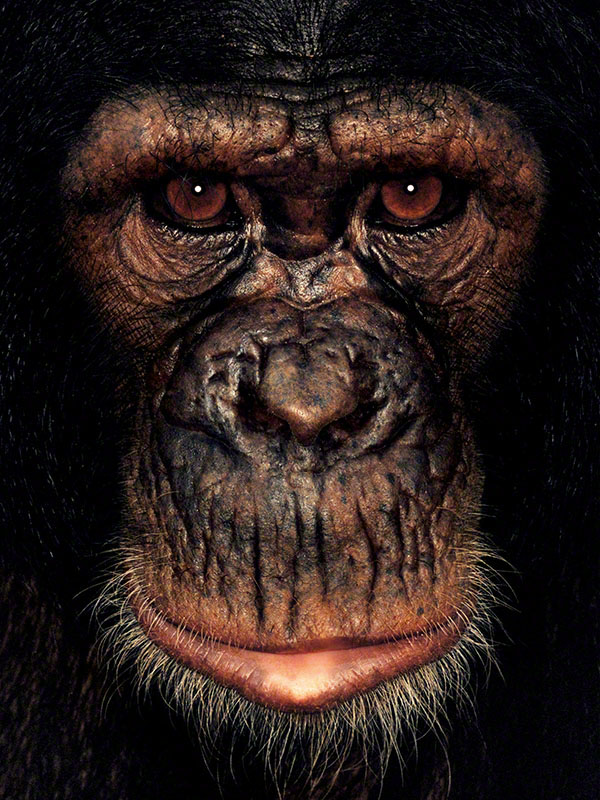
Chim, female chimpanzee, by James Mollison, 2001
James Mollison’s photobook James & Other Apes was published in 2004 and expanded a year later, and the pictures have surfaced regularly since then with good reason. His comparative portraits of the great apes—chimpanzees, gorillas, orangutans, and bonobos—were a revelation. It’s unlikely that anyone had ever taken such extraordinarily intimate and soulful pictures of these animals before, and the only way to equal them would be to duplicate his methods.
After watching a television program about primates, Mollison hit on the idea of photographing them using the format of the passport photograph. The pictures would concentrate on the face, with the animal staring at the viewer, and they would follow this style consistently. For three years he traveled to Cameroon, Republic of the Congo, Democratic Republic of the Congo, and Indonesia to find suitable subjects, mostly orphans in animal sanctuaries. It’s no easy task to persuade a hyperactive ape to sit still for a photograph, and he spent time becoming familiar to the animals, using ruses such as pretending to find a flea in their fur, or offering a peanut, to gain their attention for a few vital seconds and shoot the picture.
Mollison met Chim, a five-year-old female, in 2001, at Mvog-Betsi Zoo in Yaoundé, Cameroon. The chimpanzee’s parents were killed by poachers for bushmeat, and she was acquired by an environmental journalist who treated her like a child and dressed her in clothes. When she arrived at the sanctuary, she had a mouth injury and worms. She had been made to dance to receive food, and at the time Mollison visited she was still dancing compulsively when hungry. Compared to other chimps of similar age, Chim’s deeply wrinkled face looks older and careworn. Her hooded brow shrouds her dark eyes, making her appear knowing, watchful, and wary. Observing primates at a distance on a nature program or in the wild, it’s easy to assume that their features are more or less interchangeable, as with many other species. Mollison’s captivating studies reveal that apes’ faces are as uniquely individual and expressive of personality as human faces.
This emotional contact through the image with the ape’s intelligence is a startling confirmation of what we know in the abstract—that 98.8 percent of our DNA is shared with chimps. Mollison ended up composing the pictures more tightly than passport photos, and they are all the better for it. The darkness of the animals’ fur frames and accentuates their faces, allowing us to perceive Chim and the other apes with total clarity as if we are encountering these species for the first time.


Comments [1]
01.20.16
04:41